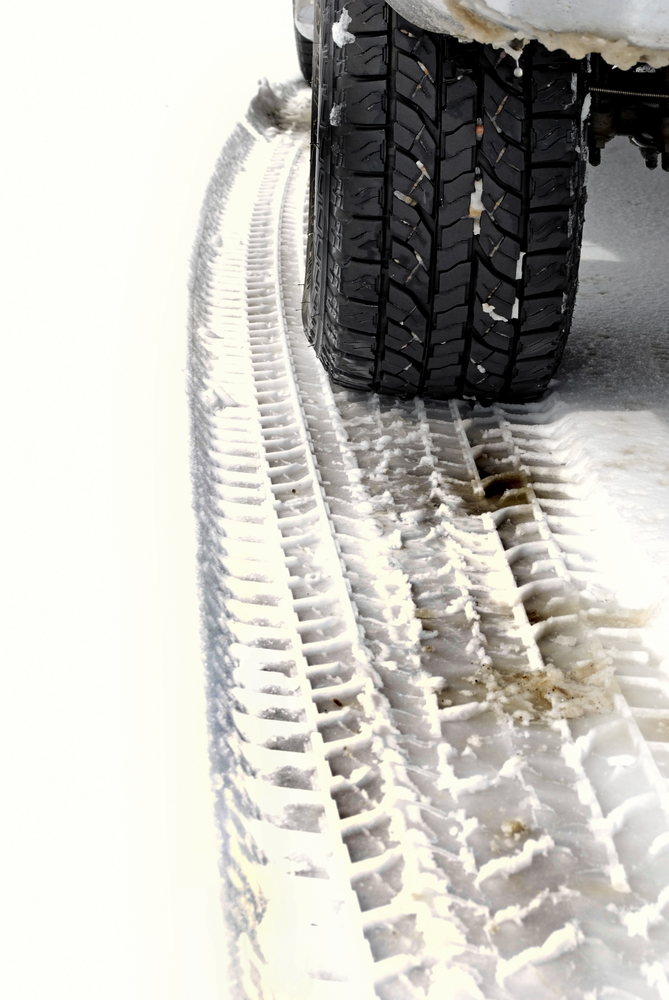Cold temperatures and winter weather can be the biggest enemy to both a tire and a driver due to tire pressure and performance changes that must be monitored.
The exact PSI level of your tire will depend ultimately on your vehicle specifications, but the general rule is for your tire pressure to be between 30 and 35 PSI in the winter. This allows your tires to remain at optimal levels for better safety, driving performance, and fuel efficiency.
With the onset of winter, it is important to know what the right tire pressure should be so you can get the right performance out of your car. Tire pressures vary significantly depending on the type of tires and driving conditions. This guide will help you understand how tire pressure changes during different seasons and what it means for your tires.
If you have ever driven in the winter when your tire pressure light came on, you have experienced what it is like for your tire to lose air to the cold temperatures. In this guide, you will learn how to properly inflate your tires so they can drive at safe levels during the winter.
Most people are not aware of how much pressure their tires require in various seasons. Most drivers, especially those who do not know how to check their tire pressure, will most probably over-inflate them to compensate for the lack of traction on ice and snow.
This is why it is advisable to keep your tire pressure between 30 and 35 PSI in the wintertime. It will help you drive with ease on icy roads without skidding or sliding out of control.
The main reason for this is that snow and ice on the ground can make it harder to maintain proper tire pressure. Maintaining this level of pressure can also prevent damage to the car if you hit a patch of ice.
The tire pressure should be between 30 and 35 PSI in the winter months to ensure that your vehicle runs smoothly on snow-covered roads. This is due to the fact that at lower pressures, your tires are more likely to get stuck or cause hydroplaning, which can lead to loss of vehicle control.
By maintaining this tire pressure level, your tires will be more reliable. When you drive on underinflated tires, you run the risk of experiencing flat tires or vehicle issues.
In the winter, tire pressure can decrease as much as 1 PSI per 10 degrees that the temperature drops. This means you need to constantly pay attention to your tire inflation levels when the weather gets colder.
With colder weather comes a potential decrease in air pressure of your tires, which means that they may not be able to provide you with reliable traction on icy or snowy terrain.
If your car is equipped with a TPMS, you may not have to worry about it too much because most cars have sensors that keep track of your air pressure and notify drivers when something is off.
It is often confused with the notion that air is escaping from inside the tire, but this is not the case. Instead, the air inside the tire will condense when it gets colder.
This lowers the air pressure in the tire which can cause problems for drivers and their cars. When this occurs, your PSI will drop, and the performance of your tires may drop along with it.
In the winter, tire pressure should be at a higher level to ensure a safe drive. Increasing tire pressure in SUVs and trucks is not just about safety but increases tire performance and longevity.
The tire pressure of SUVs and trucks in the winter should be higher than the summer tires. It is estimated that it should be between 35 to 40 PSI in the winter tires to accommodate for the heavier load capacities and cold temperatures that will alter the tire pressure.
The average vehicle in this category will operate under 35 PSI nearly all year, but in the winter more air needs to be added to tires to maintain performance and keep tires safely on the road.
40 PSI is the maximum we recommend for these vehicle types, and any higher can potentially pose some risk to both your tires and your vehicle. If you inflate the tire too much, it can become too hard or firm causing your suspension to suffer on your vehicle.
If you inflate the tire too much, it can become too hard or firm causing your suspension to suffer on your vehicle.
Beyond just suspension issues, your tires will also lose the traction on the ground that you desperately need in wintry conditions. By sticking between 35 to 40 PSI levels, you can ensure proper vehicle control, handling, and steering responsiveness during freezing temperatures.
The tire pressure for sedans can be lower because they are lighter to drive. It comes down to the load capacity on a vehicle and how heavy they are driving on the road consistently.
It is best to add between 1-3 PSI to your tire based on whatever the recommended level is by your vehicle manufacturer. This accounts for the amount of PSI you are losing based on the temperature drops and should keep you covered.
Compared to SUVs and trucks, sedans are much lighter vehicles that require less PSI to maintain high-quality driving.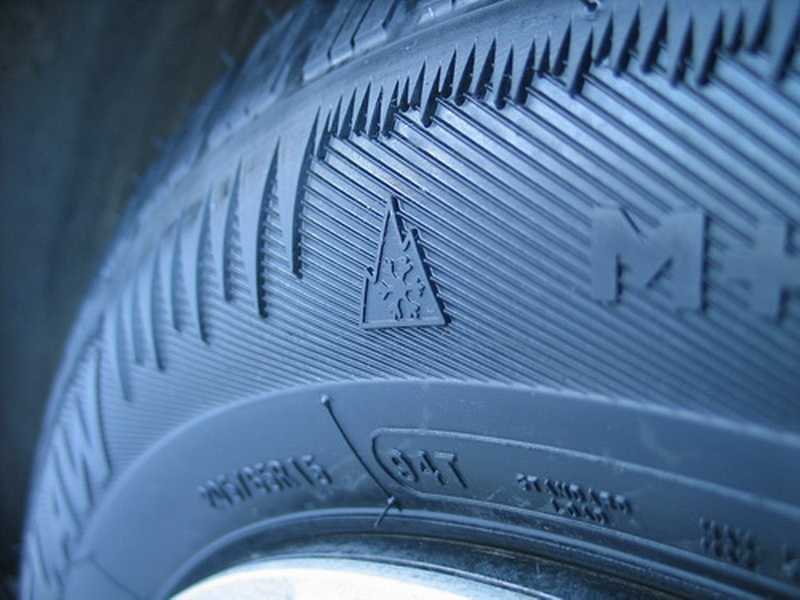
The estimated PSI should be between 30 to 35 PSI. As you will notice on most sedans, this is higher than the initial PSI levels the tires are at, but it is necessary because of the colder temperatures that cause the air to condense inside.
Tires are designed to provide traction but they can't provide it without air in them. If you're driving on thin ice, you need more air in your tires, or else they will fail. The importance of tire inflation is paramount for your safety on the road.
Since the levels are lower on sedans, you have a bit more room to spare if you overinflate the tires before you experience issues. However, it is never recommended because the softer winter tire rubber is more susceptible to blowouts or flats when overinflated.
Vehicle tires can lose up to 10% of their air pressure when the temperature is below freezing. This is due to air condensing inside a tire due to the temperature drop.
The recommended maximum cold tire pressure for most passenger cars and light trucks is 30-35 PSI, but as you will see below this is not always true. Some vehicles like sports cars use a higher PSI in the tire than you would expect.
Some vehicles like sports cars use a higher PSI in the tire than you would expect.
Every vehicle will adhere to the rules and guidelines set by the manufacturer. This is why all vehicles come with a recommended PSI that can either be found on the side of the vehicle near the driver or in the manual.
It is recommended to always check the recommended PSI on your vehicle before making any alterations to the tire. The winter level should add a few more PSI to account for the temperature drop that will cause air to condense.
The winter season brings its own set of challenges when it comes to tire pressure management. If you don’t know what your tire pressure should be in the winter, you can use our recommended tire pressure levels for winter driving.
| Vehicle | Recommended PSI | Winter PSI |
|---|---|---|
| Ford Explorer | 32-35 PSI | 37-40 PSI |
| Honda Civic | 30-33 PSI | 33-36 PSI |
| Nissan Sentra | 33 PSI | 35 PSI |
| Toyota Camry | 30 PSI | 33 PSI |
| Acura MDX | 35 PSI | 38 PSI |
| Audi A4 | 34 PSI | 36-37 PSI |
| Chevrolet Blazer | 35-36 PSI | 38-39 PSI |
| GMC Canyon | 35-36 PSI | 38-39 PSI |
| Jeep Cherokee | 36-37 PSI | 40 PSI |
| Lexus IS350 | 35 PSI | 37-38 PSI |
For smooth, safe rides and to prolong the life of your tires, it’s important to find the optimal winter tire pressure for your vehicle. To ensure that you have “winter road worthy” tires, consider the following.
To ensure that you have “winter road worthy” tires, consider the following.
There are several misguided beliefs about the appropriate winter tire pressure that can result in costly problems for your car. In order to function properly and avoid problems, tires need to be appropriately filled to the correct pressure year-round. Why? Because weather conditions have an effect on tire pressure. For instance, during the summer months, the air expands in the tires as the weather heats up. During winter’s frigid months, the air pressure contracts. Something else to remember is that as you drive your vehicle, tire pressure increases slightly.
Vehicle manufacturers recommend PSI (pounds per square inch) for tire inflation and it’s the PSI rating you need to inflate your tires to. The PSI recommendation can be found inside the driver’s side door on a sticker, or in the manual.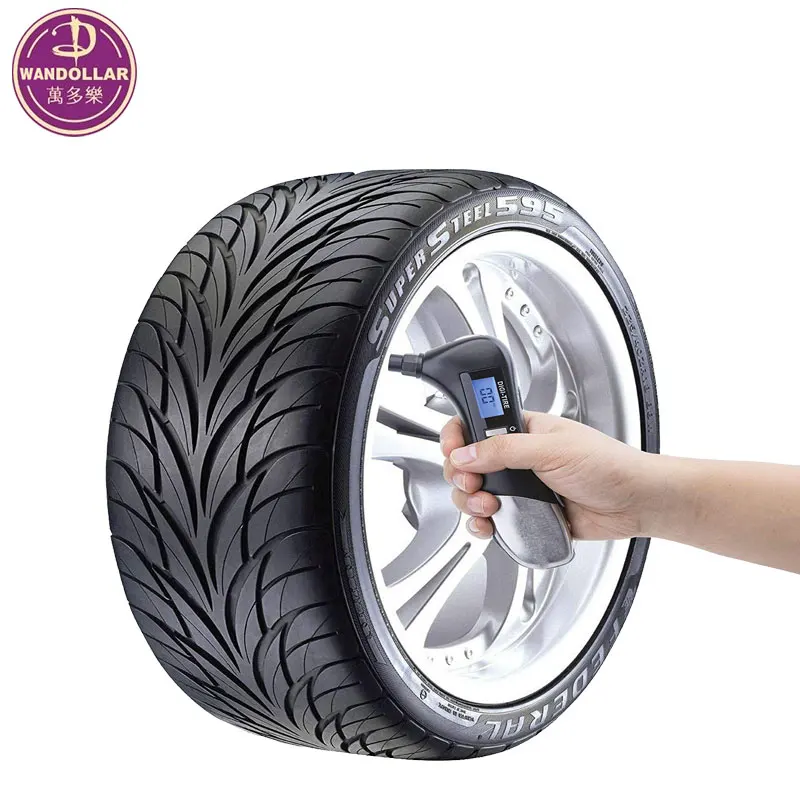 The PSI rating has been designed to deliver the most comfortable ride for your car. So, what about the “Max PSI” rating located on the sidewall? “Max PSI” is the PSI that the tires will support at maximum carry load. For regular, everyday use, tires need to be inflated to the vehicle’s manufacturer recommendation.
The PSI rating has been designed to deliver the most comfortable ride for your car. So, what about the “Max PSI” rating located on the sidewall? “Max PSI” is the PSI that the tires will support at maximum carry load. For regular, everyday use, tires need to be inflated to the vehicle’s manufacturer recommendation.
To ensure the optimal winter tire pressure follow the manufacturer’s recommendations. If you don’t have your manual handy, try looking for an online version for call a trusted auto repair shop. You can also find the recommended tire pressure on a sticker in the door jam as mentioned above. Some vehicle models place the stickers in the console, on the trunk lid, or on the fuel door.
The recommended tire pressure is typically between 30 and 35 PSI. Anything less will affect fuel economy and how the vehicle handles. When your tires are filled to the recommended PSI, you’ll benefit from their performance and optimum life. Some vehicle owner manuals advise operating winter tires several PSI higher, usually between 3 to 5 higher than the recommended pressures for all season and summer tires.
Some vehicle owner manuals advise operating winter tires several PSI higher, usually between 3 to 5 higher than the recommended pressures for all season and summer tires.
All you need to do to determine your current tire pressure is unscrew the fill valve cap and check it using a pressure gauge, right? Well, sort of. Whether or not the car has been driven, and the time of day, can alter the tire pressure enough that you may not get an accurate reading. As an alternative, check the tire pressure in the morning before driving the car. Other things you can do include checking the pressure when you fill up the gas tank, as the temperature changes, or every 30 days.
We can assist you in determining the best winter tire pressure for your vehicle. Click here to learn about our general car and maintenance services.
In this article we are going to give the simplest, and most importantly, certainly accurate answer to a question that worries many drivers.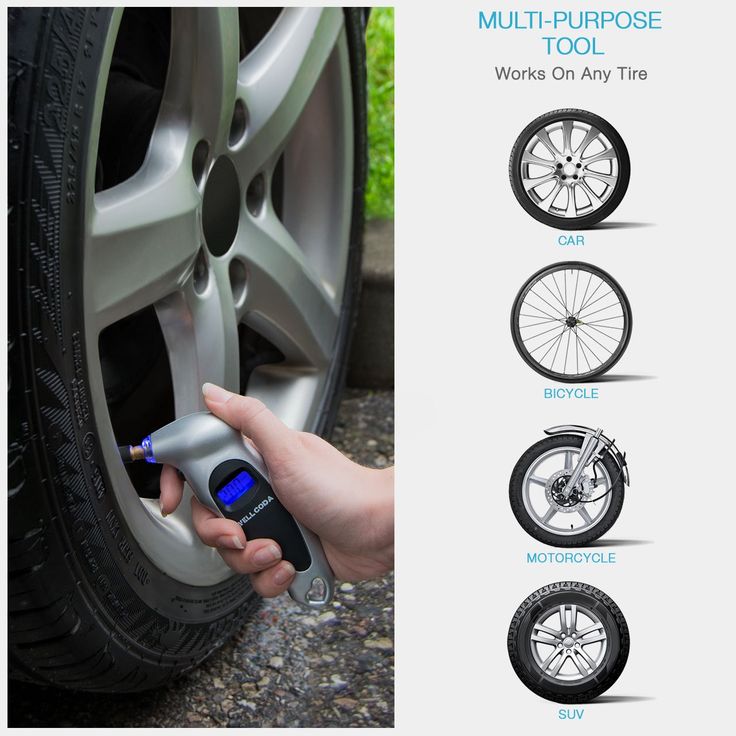 Namely - what should be the pressure in the tires in winter. The answer is surprisingly simple - the pressure must be right! This is not a joke at all, and not a mockery - the optimal pressure is not "low" pressure, and not "increased", but exactly the one indicated in the instructions for the car.
Namely - what should be the pressure in the tires in winter. The answer is surprisingly simple - the pressure must be right! This is not a joke at all, and not a mockery - the optimal pressure is not "low" pressure, and not "increased", but exactly the one indicated in the instructions for the car.
The recommended rate does not change depending on the season. For some passenger cars, their manufacturers recommend increasing the pressure by 0.3 bar for some models to 0.8 for others, depending on the load, which is also reflected in the instructions. However, such a simple answer does not agree with some common misconceptions, and therefore we will have to deal with it.
First of all, we note that in itself the formulation of the question in the key - what should be the pressure in the tires in winter, and not what it should be in principle - is strange. Does the weight of the car become more or less from the cold? Of course, air expands or contracts depending on temperature, but we are talking about pressure, not about the amount of air. So why should the pressure in winter tires be any different - even if they differ in construction and rubber stiffness? After all, it is the air pressure that holds the weight of the car, and not the frame or tread materials. Their rigidity matters only in light of the different elasticity of rubber at a given temperature.
So why should the pressure in winter tires be any different - even if they differ in construction and rubber stiffness? After all, it is the air pressure that holds the weight of the car, and not the frame or tread materials. Their rigidity matters only in light of the different elasticity of rubber at a given temperature.
It should be said that the myth that under-inflated tires stick better to the road is one of the most stupid automotive misconceptions. The only thing that can compete with him in terms of the degree of separation from reality is the advice to pump over studded tires so that they “bite” the studs into the ice better. In fact, the only correct advice is to maintain the pressure recommended by the car manufacturer in properly selected tires.
Myths, however, are very tenacious, since they are often based on well-known facts - only misinterpreted. Therefore, in order to reasonably refute them, it will be necessary to delve a little into the theory.
Let's start with the myth that a car with under-inflated friction tires behaves better on the road in winter. Its roots are that experts really recommend lowering the wheels by about 0.5 bar if you need to overcome an area of deep snow or mud, where there is a risk of simply getting bogged down. And here it does not matter whether the tire pressure is reduced for this purpose in the winter in Norway or in the summer in Ethiopia. This advice applies only to cases of overcoming a loose area, and should not be extrapolated to driving on a road with a hard, even snowy, icy or slushy surface!
Its roots are that experts really recommend lowering the wheels by about 0.5 bar if you need to overcome an area of deep snow or mud, where there is a risk of simply getting bogged down. And here it does not matter whether the tire pressure is reduced for this purpose in the winter in Norway or in the summer in Ethiopia. This advice applies only to cases of overcoming a loose area, and should not be extrapolated to driving on a road with a hard, even snowy, icy or slushy surface!
Indeed, a soft flat tire to some extent acquires the properties that are characteristic of low-pressure all-terrain tires - this increases the contact area, softens the starting moment. But what allows you to overcome mud or deep snow at a speed of 5 km / h on a hard road is not only useless, but also harmful.
In the operating conditions for which the tire was designed, the optimum pressure is specified by the vehicle manufacturer. To accept this simple fact, it is enough to remember that the tread does the work, and it is not for nothing that the edges of its blocks are called engagement edges.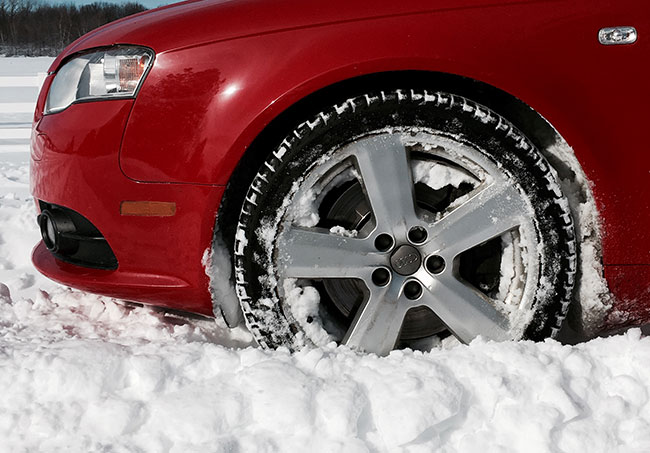 A tire with reduced pressure deforms more, the shape of the contact patch changes and the distribution of pressure on the surface within its boundaries (see the figure below), the tread blocks stop working properly.
A tire with reduced pressure deforms more, the shape of the contact patch changes and the distribution of pressure on the surface within its boundaries (see the figure below), the tread blocks stop working properly.
Insufficient winter tire pressure is especially dangerous when manoeuvring. The handling of the car suffers, it becomes less stable, the body is more prone to buildup. The moment of inertia of a car floating on “jelly” tires when entering a turn can easily break the wheels into slip. The dynamics of acceleration worsens and the braking distance increases. On top of that, fuel consumption increases and tire wear accelerates. In short - no benefit, only harm.
When engineers design a tire, they size and shape the tread blocks, all edges, sipes, and sipes to match the specific shape of the contact patch. And this form is achieved when the optimal pressure in car tires is observed, taking into account the mass of the vehicle. By the way, it is for this reason that you should use tires that are not only suitable in size, but also with the appropriate load index.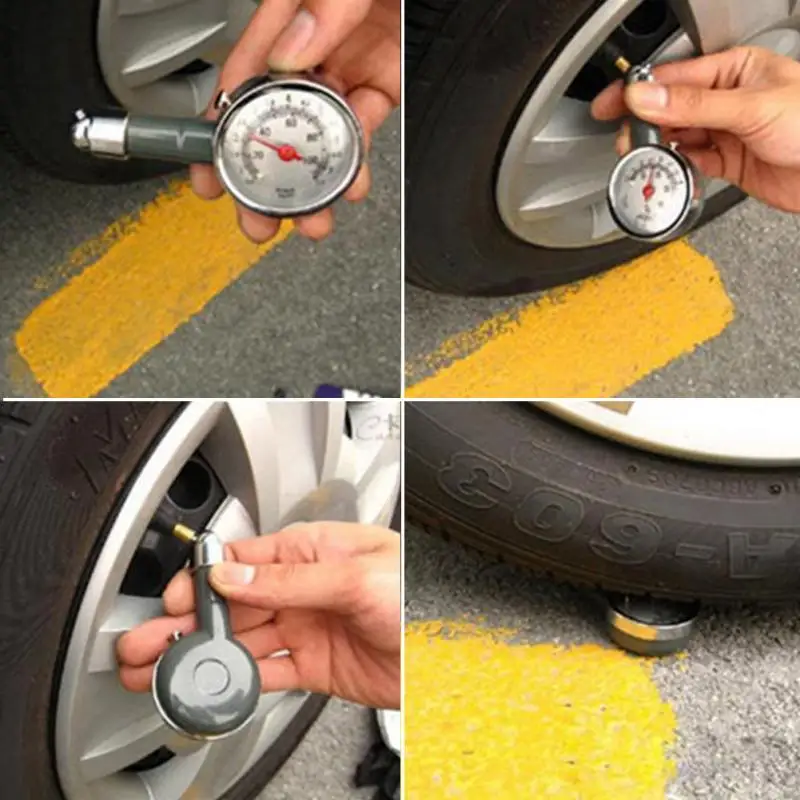 A little extra might not hurt, but you don't need to put tires of the appropriate size on a compact car, according to the load index suitable for utility vehicles, because they are "more reliable" - they are designed for a different mass.
A little extra might not hurt, but you don't need to put tires of the appropriate size on a compact car, according to the load index suitable for utility vehicles, because they are "more reliable" - they are designed for a different mass.
Indeed, what about the advice of seasoned people who recommend that you inflate your tires harder before a long journey? Do they have real grounds? Yes, stiffer tires improve directional stability. And, perhaps, such a solution can reduce driver fatigue on a long trip - you will have to taxi less. But again, this is relevant only for Soviet tarantasses with initially lousy handling at high speeds. Modern cars already manage tolerably well, even budget ones, not to mention luxury models.
And even more so - while talking - it is not recommended to inflate tires before high-speed long trips in the summer. The tire already heats up when driving, the faster the ride, the stronger. And when pumping, and when driving on hot asphalt, the risk of tire rupture during emergency braking increases.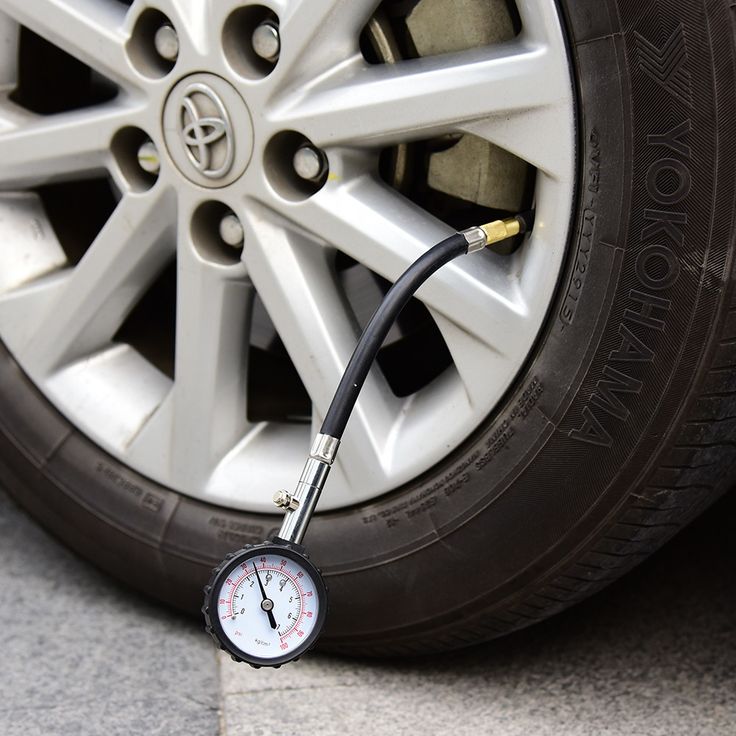 Traces of such adventures in the form of pieces of tires and dented fenders can often be observed along highways.
Traces of such adventures in the form of pieces of tires and dented fenders can often be observed along highways.
As for the opinion that higher pressure helps the studs to cut into the ice better, it also does not stand up to criticism. The spike also has engagement edges, and they either work when driving on ice with one or another efficiency - depending on the strength of the ice cover, or do not work at all when the car is driving on packed snow or slush - then the tread edges work.
You may have guessed by now that an over-inflated tire will have a reduced footprint on hard ice. Therefore, fewer spikes will be involved at any given time. At the same time, there is no reason to say that the involved spikes will, for some mystical reason, “cling better”. They will have a big load - this is a fact. And for this reason, they will more effectively crush ice - also a fact. But just at the moment when the ice begins to crumble under the spike, the grip is reduced.
By the way, if increasing the load on a single spike would help, the spikes should be as small as possible, right? But instead, tire manufacturers for some reason bother installing them in such a quantity that at the same time about a dozen spikes on each tire are in contact with the roadway. Obviously, from the point of view of the reliability of holding the spikes in the seat, the more spikes on which the load is distributed, especially when braking, the better.
Thus, whatever one may say, it turns out that the tire pressure indicated by the car manufacturer is optimal, as we remember, that the owner will buy tires with a suitable load index. Yes, maybe it's boring, and this approach does not give room for imagination and ingenuity. But, if you really want to do technical creativity, it’s better to fill tires with nitrogen. So at least it won't hurt.
The question of how much pressure to inflate tires makes sense in light of the significant temperature fluctuations during the day.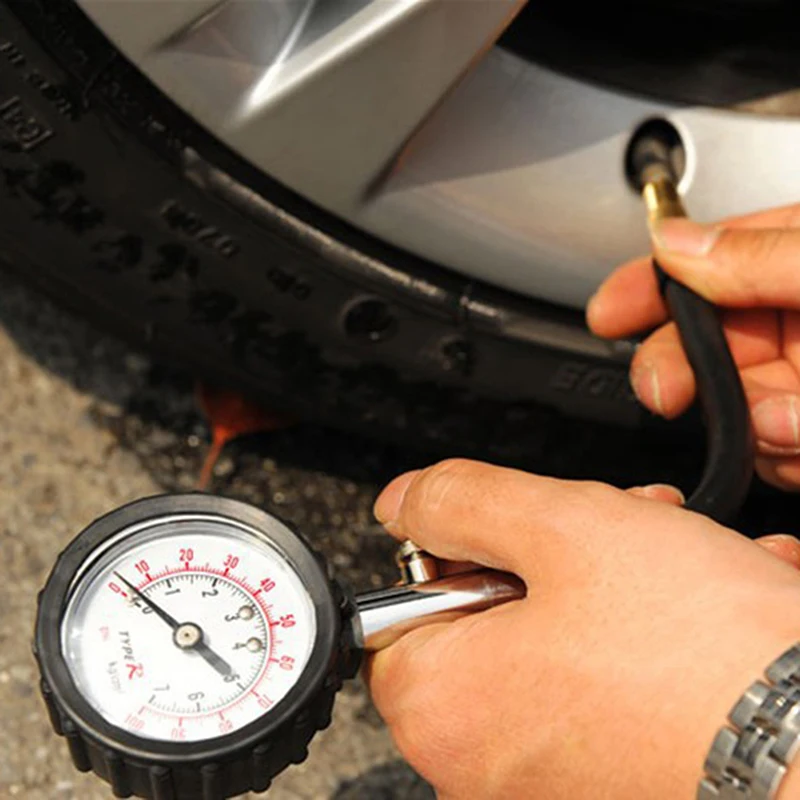 However, at any time of the year, we must remember that the air expands as it heats up. On average, for every +/-8°C, the pressure increases or decreases by 0.1 bar respectively.
However, at any time of the year, we must remember that the air expands as it heats up. On average, for every +/-8°C, the pressure increases or decreases by 0.1 bar respectively.
The recommended tire pressure in winter, as well as in summer, is indicated for a "cold" tire, that is, one that has not been in motion for at least an hour and a half (but was in the same environmental conditions as when driving during the time of day when the vehicle is predominantly used). When driving, the tire heats up, the pressure increases, and the correction for this has already been made in the recommended pressure value. However, this does not relieve the car owner from the need to independently take into account daily fluctuations. That is, if the car is used in the daytime, then it is necessary to measure the pressure on a cold tire during the day and after a sufficiently long stay of the car in the open air.
If the car is kept in a heated parking lot, and the temperature outside is 20-30 degrees lower, then the tires should be inflated by 0.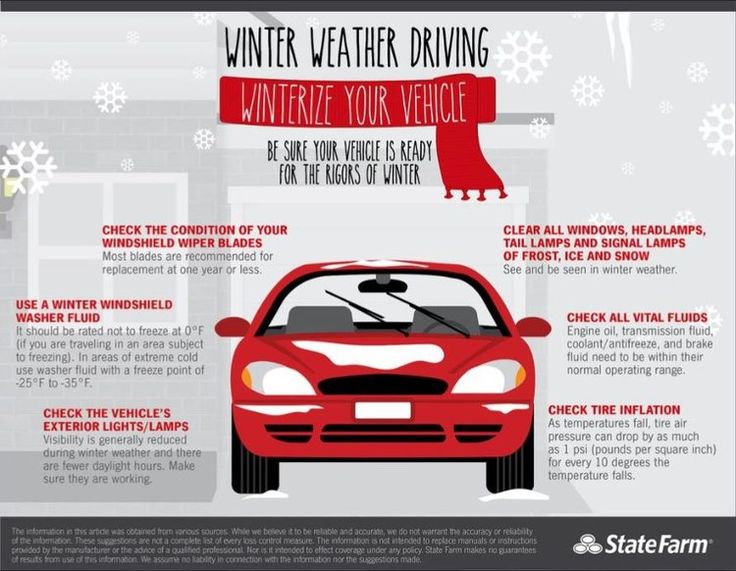 2-0.3 bar more than indicated in the recommendations. By the way, you can find them on a plate in the opening of the driver's door, less often - on the inside of the gas tank hatch.
2-0.3 bar more than indicated in the recommendations. By the way, you can find them on a plate in the opening of the driver's door, less often - on the inside of the gas tank hatch.
Recommended pressure values can be indicated both in atmospheres (1 atm = 1.03323 kg/cm2) or bars (1 bar = 0.980655 kg/cm2), which, as we see, is practically the same, and in kilopascals or psi (pound force per square inch). If necessary, recalculate the indicators, you need to know that 1 kPa = 6.8964 psi and 1 psi = 0.068 bar. However, in practice, for the transfer from one measurement system to another tire pressure values in winter, the table below will be quite applicable. You can also use the online calculator on request, for example, "kPa to bar".
The best advice I can give you about maintaining optimal tire pressure is to buy a good pressure gauge, whether it's digital or analog, as long as it's good quality, and use it often. By performing a cold pressure test at different times of the day, you will learn to understand how it changes depending on specific weather conditions.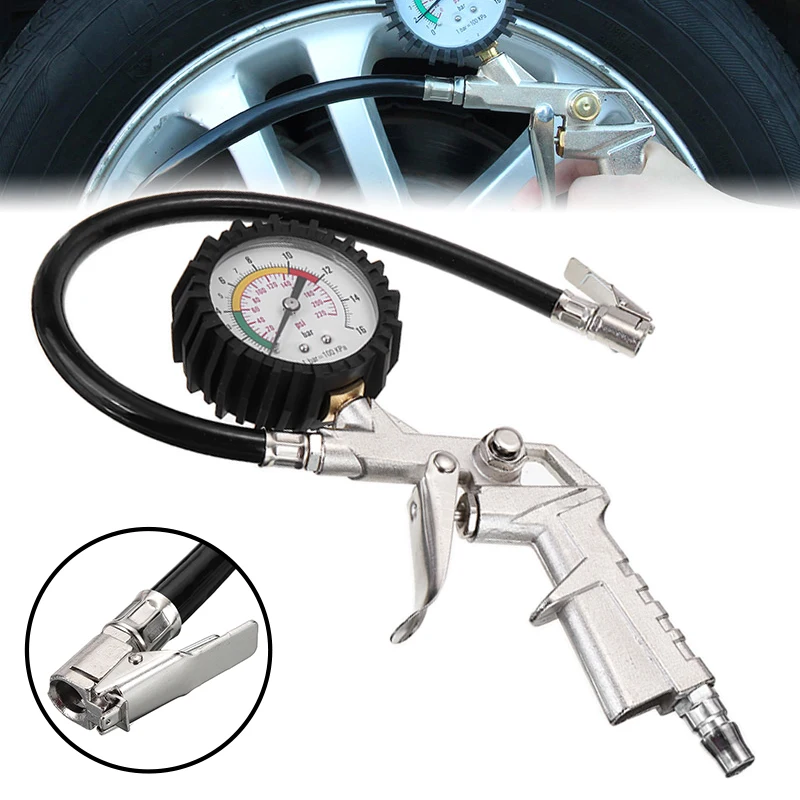 Then, if, for example, a long trip is planned, you can adjust the pressure in advance, adjusted for a specific weather forecast, so that the tire works at 100% of its qualities on the road. And yet - do not save on tires, as well as on shoes: in winter there is nothing more important than good road holding - both on foot and behind the wheel.
Then, if, for example, a long trip is planned, you can adjust the pressure in advance, adjusted for a specific weather forecast, so that the tire works at 100% of its qualities on the road. And yet - do not save on tires, as well as on shoes: in winter there is nothing more important than good road holding - both on foot and behind the wheel.
There is a tire pressure mark on the sidewall of your tires, but this is not the optimal air pressure for your tires, but the maximum. The words "Max. … 35 PSI, for example, means the maximum pressure in psi your tire needs to support its maximum load capacity of .
Likewise, is 36 psi too much? The high pressure of is generally not dangerous as long as you stay well below the "maximum internal pressure". That number is printed on each sidewall and is much higher than your "recommended tire pressure" of 33 psi, Gary. So, in your case, I would recommend that you put 35 or 36 psi in the tires and just leave it there.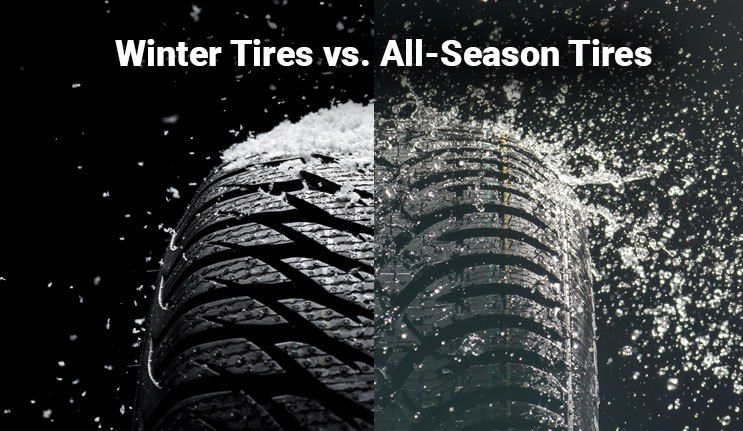
Tire pressure 31 too low? it's too low . Most tire pressure monitoring systems alert you when tire pressure drops by about 10 percent. For you, 10 percent would be a little less than 30 psi. Low tire pressure is always more dangerous than high tire pressure.
Tire pressure 28 low? Most passenger cars recommend 33 to 35 psi. At 28 psi you is running a little low and really should get them back on the air. It's not what I'd call alarmingly low, but anything more than three or four pounds below normal can cause handling problems and increase the chance of an explosion.
Second, is 5 psi too much? While 5 psi doesn't seem overly low, remember that typically 5 psi is about 20% of the recommended tire pressure for . An over-inflated tire is stiff and the ride will be rough. … On the other hand, higher tire pressure generally improves agility and handling.
If there is no sticker, you can usually find information in the owner's manual.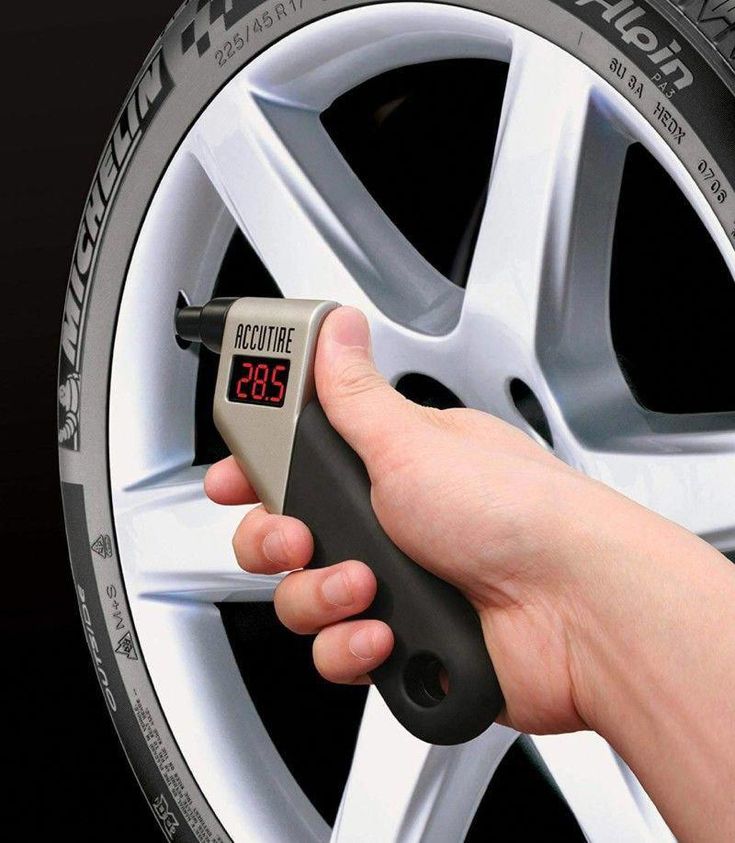 Normal tire pressure is typically 32 to 40 psi. (psi) when cold. So be sure to check your tire pressure after a long stay and this can usually be done early in the morning.
Normal tire pressure is typically 32 to 40 psi. (psi) when cold. So be sure to check your tire pressure after a long stay and this can usually be done early in the morning.
then must all 4 tires have the same PSI? tire manufacturer's maximum tire pressure. Very small numbers. Yes, all pressures must be the same . If you have 4WD or 4WD, front and rear tire pressures MUST be the same to prevent transmission damage.
At what PSI will a tire explode? A stock tire is inflated to about 30-35 psi. In hot weather and highway conditions, the air temperature inside the tire rises by about 50 degrees. This increases the pressure inside the tire by about 5 psi. Tire burst pressure is about 200 psi .
One thing that is important for proper driving conditions is proper tire inflation and pressure. The ideal pressure range in cars is between 193-234 in kPa (kilopascals) or 28 to 34 psi (psi). However, in heavier vehicles such as minivans, the pressure can be higher, up to 303 kPa (44 psi).
However, in heavier vehicles such as minivans, the pressure can be higher, up to 303 kPa (44 psi).
What is unsafe tire pressure? If you have standard passenger car tires (XNUMX% of cars have them), the lowest tire pressure you can normally drive with is 20 pounds per square inch (PSI). Anything below 20 psi is considered a flat tire and puts you at risk for a potentially devastating blowout.
What is the lowest PSI you can ride?
If you have standard car tires (ninety percent of cars), the lowest tire pressure you can normally drive with is 20 psi (PSI). Anything below 20 psi is considered a flat tire and puts you at risk for a potentially devastating blowout.
Why do dealers inflate tires too much? Short answer: when they service and change the oil the tires are usually hot . The PSI in your door is for the cold (the car has been sitting all night). If you have hot tires, the pressure will be higher than if you have cold ones. So when they fill the tires, they do so to the appropriate "hot" level.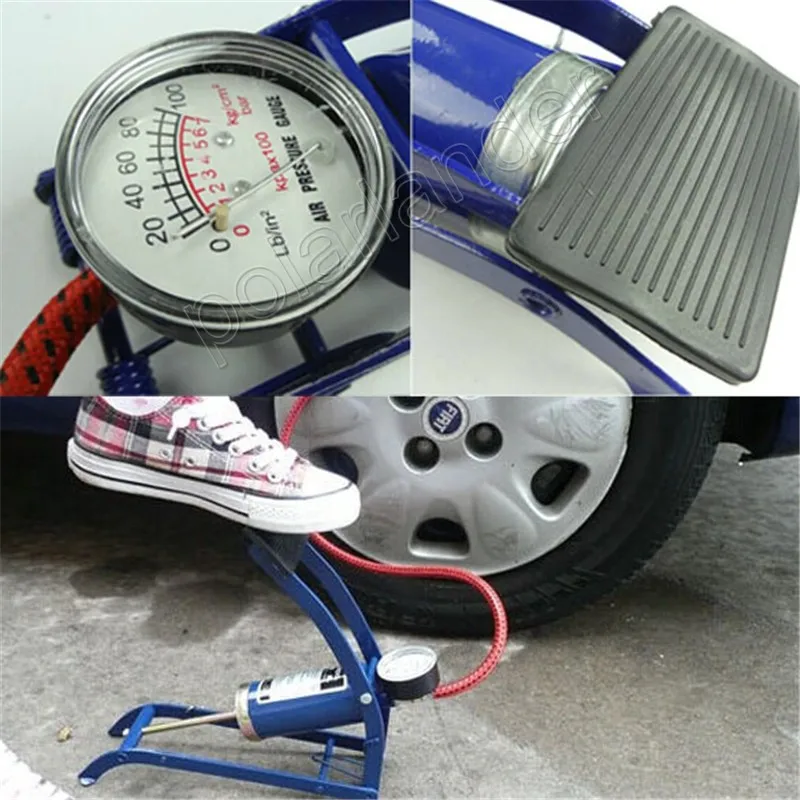
Each tire has nominal maximum inflation pressure. … This means the tire will safely handle up to 1477 pounds. and can be safely inflated to 300 kPa (kilopascal) or 50 psi (psi).
Should tires be inflated in winter?
Inflated tires in winter
Although inflating a tire is never good, especially dangerous during the winter months . The snow, ice, salt and sand that accumulate on normally clear roads in winter can reduce traction, meaning you'll have to do whatever it takes to get the most traction.
Why do mechanics pump tires? The short answer is that when they service and change the oil the tires are usually hot . The PSI in your door is for the cold (the car has been sitting all night). If you have hot tires, the pressure will be higher than if you have cold ones. So when they fill the tires, they do so to the appropriate "hot" level.
Can tires be inflated? Inflating tires can make them more vulnerable to damage.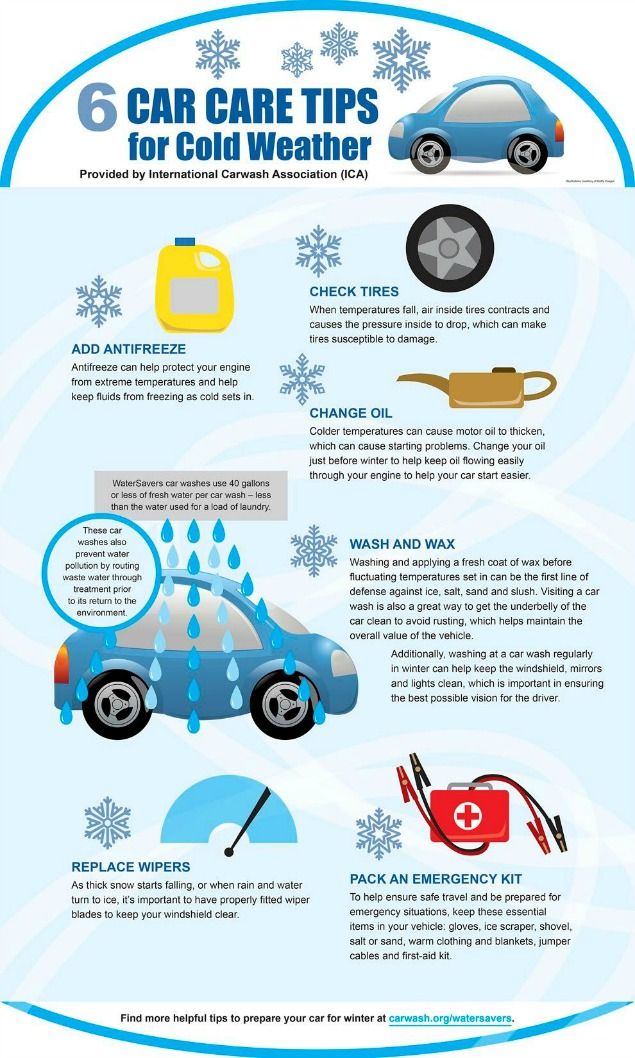 … Excessive air pressure can also deform the shape of the tire, resulting in reduced traction and increased wear on the center of the tire.
… Excessive air pressure can also deform the shape of the tire, resulting in reduced traction and increased wear on the center of the tire.
One thing that is important for proper driving conditions is proper tire inflation and pressure. The ideal pressure range in cars is between 193-234 in kPa (kilopascal) or 28 to 34 pounds per square inch (psi). However, in heavier vehicles such as minivans, the pressure can be higher, up to 303 kPa (44 psi).
Can I drive with uneven tire pressure? Why you Do not drive with low tire pressure
An accident like this can cause you to lose control of your vehicle at high speed, endangering yourself, your passengers and others on the road. In addition, low tire pressure has a negative effect on fuel economy and leads to faster tire wear.
Do wider tires need more psi?
To explain optimal tire pressure in simple terms, think of it this way: the load of any vehicle is supported by the amount of air in the tires.